
How Long Does THC Stay In Your System?
Cannabis can stay in your system long after your high has completely faded, meaning you can test positive on a drug test even if you haven't smoked in a while. We'll tell you about the different factors influencing detection, and provide some valuable tips for getting rid of any THC leftovers faster.
THC—or better said its metabolites—can stay in your system long after your high has completely faded, meaning you can test positive on a drug test even if you haven't smoked in a while. We'll tell you about the different factors influencing detection, and provide some valuable tips for getting rid of any THC leftovers faster.
Although the effects of THC fade relatively quickly, its metabolites (meaning the compounds produced in the body when THC gets metabolised) can be detected in the body long after your high is over. If you have a drug screening coming up, this can be quite disconcerting. How long exactly cannabis stays in your system depends on numerous factors, such as your consumption method and usage frequency. Below, you'll get to know the most important factors affecting how long THC stays in your system, and how to get rid of it faster.
How does cannabis impact you?
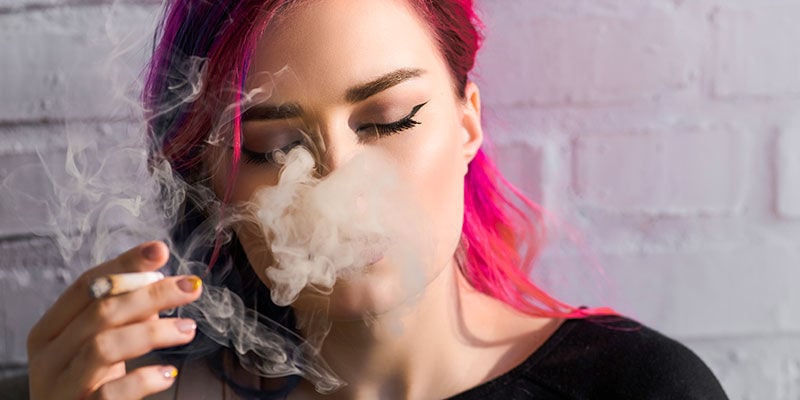
Cannabis contains hundreds of different compounds, but the constituent responsible for getting us high is THC (Δ⁹-tetrahydrocannabinol). THC quickly enters the bloodstream when you smoke or vape cannabis. With other consumption methods, such as edibles, it can take much longer for THC to be absorbed and its effects to be felt.
The effects from eating edibles are also stronger and longer-lasting than those from smoking or vaping. If you eat cannabis, the high usually lasts 2–10 hours, while it can dissipate within 30–60 minutes if you smoke or vape it. However, even with smoking, there can be some lingering effects from consumption for up to 24 hours.
After smoking, the THC in the blood is rapidly broken down in the body (mainly in the liver), where it is modified into metabolites. These metabolites accumulate in the body by dissolving into fatty tissues until they’re slowly excreted via urine and deposited in hair. The two main metabolites of THC are 11-hydroxy-THC (THC-OH) and 11-carboxy-THC (THC-COOH).
How long do THC metabolites stay in your system?
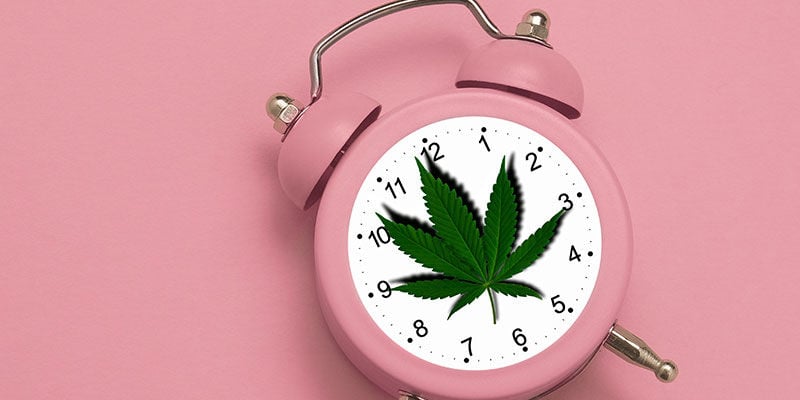
Unfortunately, there is no straight answer to this question. With cannabis constituents, it can take up to 90 days for our system to get rid of the last “leftovers”, which is due to the way they get metabolised in the body. The exact time can vary significantly from person to person, depending on various factors, including one’s body and consumption habits.
Factors thought to influence this include body mass index (BMI), how often you use cannabis, what and how much you consume, the consumption method, and biological sex (oestrogen levels). In the next section, we’ll address these and other aspects in more detail.
Factors that influence detection
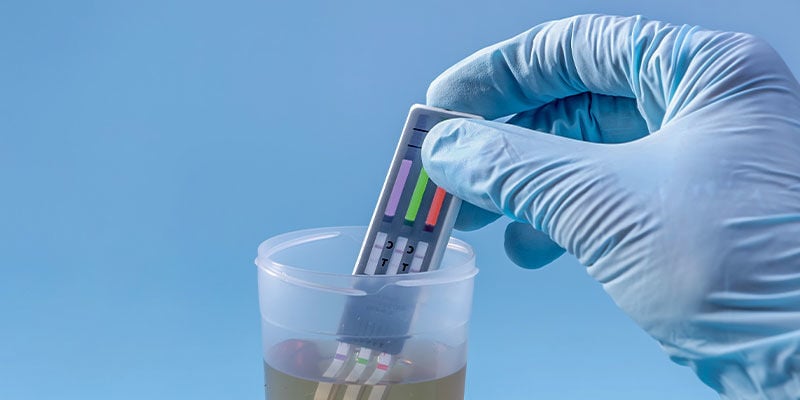
Cannabis impacts each user slightly differently. As mentioned, how long THC metabolites remain detectable in your body can be influenced by a number of factors around consumption and physical condition. The detection window further depends on the kind of drug test, which we’ll get back to below. In general, weed use remains detectable longer with higher doses and more frequent use.
If you are going to be subjected to a drug test, being aware of these factors may help you to assess your situation more accurately and navigate through the screening smoothly.
🔍 Body mass index
It is thought that the body mass index (BMI) can have significant effects on how a user processes THC. THC is a very lipid-soluble chemical, meaning it easily attaches to fat cells. This increases the length of time the body needs to fully eliminate cannabis compounds, which is in part why the detection window with cannabis can be relatively long compared to certain other drugs (most recreational drugs are much less lipid-soluble). It is said that people with a higher body fat percentage may metabolise THC more slowly, but this is controversial.
It is sometimes argued that cannabis remains longer in bodies with a higher BMI. However, the validity of this may be questionable. First, BMI is a dated, biased measure that doesn’t account for various factors that are necessary to consider when assessing and analysing someone’s body. It makes more sense to analyse more precise aspects, such as body fat percentage in this case. Second, even individuals with low body fat still have plenty of fat around their body for THC to attach itself to.
🔍 Usage frequency
How often you use cannabis has a significant impact on the detection window (Taylor et al., 2016). Every time you consume cannabis, you replenish the cannabinoid levels in your body. You’re basically resetting the body’s process of eliminating THC and its metabolites, which means the detection window is back to day zero.
🔍 Consumption method
Cannabis compounds get absorbed and processed differently in the body depending on the consumption method, which also influences detection. With smoking or vaping, THC will be processed faster than if you take edibles.
🔍 Biological sex
Sex hormones interact with the endocannabinoid system, meaning the sex one gets assigned at birth (generally referred to as “biological sex”) could influence the length of time a body needs to process and fully eliminate THC and its metabolites.
Oestrogen is especially relevant here. While this sex hormone is present in all bodies, levels are higher in biologically female bodies compared to biologically male bodies, and vary across intersex people and transgender people who undergo medical transition.
Interestingly, the number of CB1 receptors in various regions of the brain depends on our oestrogen levels. In other words, oestrogen levels influence how receptive our brains are to cannabinoids. Furthermore, oestrogen increases the level of the endocannabinoid anandamide, which amplifies the strength of the endocannabinoid system. So, THC may affect people with higher oestrogen levels more strongly.
Sex is also discussed in regard to body fat in this context. On average, people assigned the female sex at birth have more body fat than those assigned male (these binary categories of course fail to represent all humans). Again, these arguments imply that people with more body fat process cannabis more slowly, which, as mentioned above, is a controversial statement.
Types of drug tests
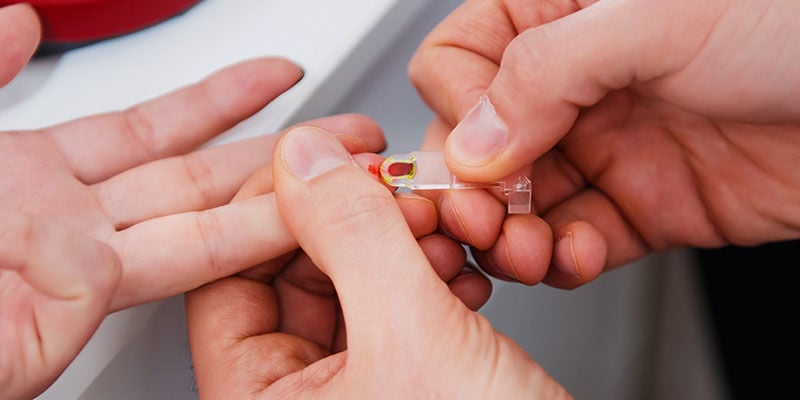
A drug test aims to detect how much of a drug is in your system, if any. This is done by analysing biological samples such as urine, blood, saliva, hair, or sweat.
There are many different types of drug tests, which vary in terms of threshold and detection window. The detection window is the period during which a person can test positive after use, which is determined by the factors mentioned in the last section, and by the nature of each drug test. The threshold, or “cutoff”, is the minimal amount of a substance or compound that needs to be present in the body for a drug test to render a “positive” result.
Types of tests also differ in what they look for as indications for drug use. Most recreational drug screenings look for drug metabolites—the remnants of a drug that remain in the body after it’s been metabolised. A urine screening, for example, uses this method. Tests looking for metabolites use antibodies that attach to relevant metabolites, and then an ELISA test (enzyme-linked immunosorbent assay) is used to check whether any antibodies have found any relevant counterparts.
Below, we’ll go through four common drug screening methods, explain how they work, and how long after THC use each of them can register positive.
1️⃣ Blood
Blood tests are not often used, but they are effective. It’s unlikely to be subjected to one in daily life, and in many countries, police need a special writ to take a blood sample from someone (know your rights). Blood tests are mostly used as part of a police investigation or after an accident.
Unlike most tests, blood tests don’t screen for metabolites (which can stay in your body a long time), but for the presence of illicit drugs themselves, meaning they are meant for detecting recent drug use and not what you consumed days ago. According to some research, this means THC can usually be detected in the blood for 1–2 days; other sources say it’s just a few hours.
2️⃣ Saliva
Saliva tests screen for metabolites and are becoming increasingly common, especially as an alternative to urine screenings. Saliva tests are more expensive than the latter, but they are considered less invasive, very simple to conduct, and harder to beat—since the person tested must provide the sample right in front of the eyes of the examiner.
Saliva tests can detect cannabis for up to 72 hours after consumption.
3️⃣ Hair
Hair tests are the most sensitive tests and have the longest detection window. The body deposits a small amount of cannabinoids into hair follicles. As a result, analysing one of your hairs with super-sensitive lab equipment may show positive results up to 90 days after use, with an extremely low detection threshold.
Sometimes, hair tests may show false positives when a person has been in contact with a cannabis user (Moosmann et al., 2015). This is because the oil in the skin that gets transferred to hair can be transferred to another person via touch.
These tests are more expensive than other screening methods and are primarily used when an institution or law enforcement wants to test for a longer history of use.
4️⃣ Urine
A urine screening is by far the most common drug test; it is the cheapest and the quickest. For most drugs, urinalysis can indicate very recent use, as it has a relatively short detection window. However, this does not apply to cannabis! THC can be detected in a urine sample for up to 30 days after use.
How to get THC out of your system

If you’ve got a (potential) drug test ahead of you, you may want to make sure not to have any cannabis remnants hanging out in your body at the time of the screening. Now, how are you going to get rid of those metabolites? Can you do anything to speed up the process? Yes, you can! But before we go into detail, be aware that to play it safe, you’ll have to stop using cannabis well before the testing date.
✅ Drink water
Hydration is crucial for the body to flush out unwanted substances, whether you do drugs or not. To help your body cleanse the system of any cannabis remnants, drink a lot of water and pee as much as possible. Do this especially 24–48 hours before the screening. Continue drinking large amounts on the day of the test to dilute your urine. This may make it harder to detect any THC metabolites in case you’re subject to a urine test. Don’t make it obvious by overdoing it, though. If the sample is too diluted, you’ll probably need to retake the test.
✅ Drink detox drinks
If you can’t be bothered to drink litres of water, and want to add some taste, vitamins, or minerals to the table, try some detox drinks. Their ingredients foster hydration and could potentially support detoxing organs, such as the liver and kidneys, helping with their usual work. Detox drinks include, for example, green smoothies and cranberry juice.
✅ Give your body activated charcoal
Charcoal binds to THC metabolites, which disrupts their continued circulation through the body (Skopp & Mikus, 2013). As this applies to other substances too, activated charcoal is often used medically to manage overdoses.
You can consume it as capsules or mix yourself a drink with activated charcoal powder. Make sure you dose it correctly according to purpose, product, and your body, and consult a health professional before taking it with prescribed medication.
✅ Stop consuming cannabis
Again, if you have a drug screening ahead of you, you should consider not using any cannabis until then. The tips and tricks above will not work to compensate if you consume too close to the screening date.
Can CBD cause you to fail a drug test?
No. Not if you’re using CBD products that meet the correct legal standard for THC levels. Pretty much all drug tests look for THC metabolites, which have very little chemical similarity with CBD. This means that CBD itself is not an issue for drug screenings, simply because the test is not designed to recognise it.
Cannabis drug testing: FAQ
- How long can THC be detected in the body?
- Anywhere between a few hours and 90 days. It depends on your body, how often and how much you use, your consumption method, and the type of test.
- How long does cannabis stay in urine?
- 3–30 days after use.
- How long does cannabis stay in the blood?
- At least a few hours, possibly 1–2 days after use. Again, it depends on a number of factors regarding your consumption and body.
- How long does cannabis stay in saliva?
- Up to 72 hours after consumption
- How long does cannabis stay in hair?
- Up to 90 days after consumption.
- Will a single hit of cannabis show up on a drug test?
- Potentially. Even if it’s just a tiny bit, the body needs time to process and eliminate THC and its metabolites.
- How long should you abstain from cannabis before a drug test?
- If you want to be sure, don’t consume any cannabis for 90 days before the test. If you know what type of screening you’ll be subjected to, you could consider adapting your period of abstinence to the respective detection window. The safest way to go is to abstain from cannabis for as long as possible.
Hopefully, you now have a solid overview of the issue. The factors influencing the detection window for a cannabis drug test are varied and complex, but a basic understanding may suffice to know how to prepare yourself for the screening. Feel free to experiment with our tips to help your system cleanse itself of any cannabis remnants. However, keep in mind that you should consider abstaining from cannabis for as long as possible before a drug screening, just to be sure. Good luck!
- Moosmann, B., Roth, N., & Auwärter, V. (2015). Finding cannabinoids in hair does not prove cannabis consumption. Scientific Reports, 5(1). - https://www.nature.com
- Skopp, G., & Mikus, G. (2013). An in vitro experiment on the interaction of charcoal or wheat bran with 11-nor-9-carboxy-Δ⁹-tetrahydrocannabinol and its glucuronide. Analytical and Bioanalytical Chemistry, 405(29), 9449–9453. - https://link.springer.com
- Taylor, M., Lees, R., Henderson, G., Lingford-Hughes, A., Macleod, J., Sullivan, J., & Hickman, M. (2016). Comparison of cannabinoids in hair with self-reported cannabis consumption in heavy, light and non-cannabis users. Drug and Alcohol Review, 36(2), 220–226. - https://onlinelibrary.wiley.com
-
 7 min
31 January 2025
How To Pass A THC Drug Test (2025)
There's no doubt that a drug test can be an intimidating prospect, but you're in the right place. We cover everything you need to know about THC drug tests, and delve into the various methods, both...
7 min
31 January 2025
How To Pass A THC Drug Test (2025)
There's no doubt that a drug test can be an intimidating prospect, but you're in the right place. We cover everything you need to know about THC drug tests, and delve into the various methods, both...
-
 7 min
4 January 2022
Drug Tests: What You Need To Know
Drug tests range from a nuisance to potentially life-changing. If you're using drugs, and people really want to know, there are ways to find out. However, learning about the process can help you...
7 min
4 January 2022
Drug Tests: What You Need To Know
Drug tests range from a nuisance to potentially life-changing. If you're using drugs, and people really want to know, there are ways to find out. However, learning about the process can help you...
-
 5 min
1 July 2021
Can CBD Cause You To Fail A Drug Test?
Regular random drug testing is an unfortunate reality for many people. Luckily, taking CBD supplements like oils, tinctures, creams, or edibles shouldn't affect your drug test results. Keep reading...
5 min
1 July 2021
Can CBD Cause You To Fail A Drug Test?
Regular random drug testing is an unfortunate reality for many people. Luckily, taking CBD supplements like oils, tinctures, creams, or edibles shouldn't affect your drug test results. Keep reading...
-
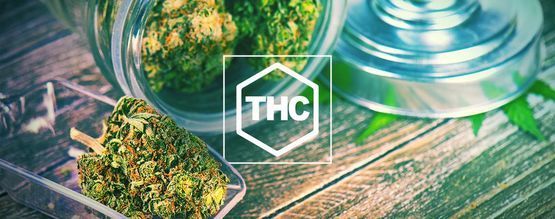 4 min
13 June 2019
Everything You Need To Know About THC
THC—this simple molecule inspires millions of people to grow cannabis every year. But what exactly is THC? And why do people love it so much?
4 min
13 June 2019
Everything You Need To Know About THC
THC—this simple molecule inspires millions of people to grow cannabis every year. But what exactly is THC? And why do people love it so much?













 United States
United States










